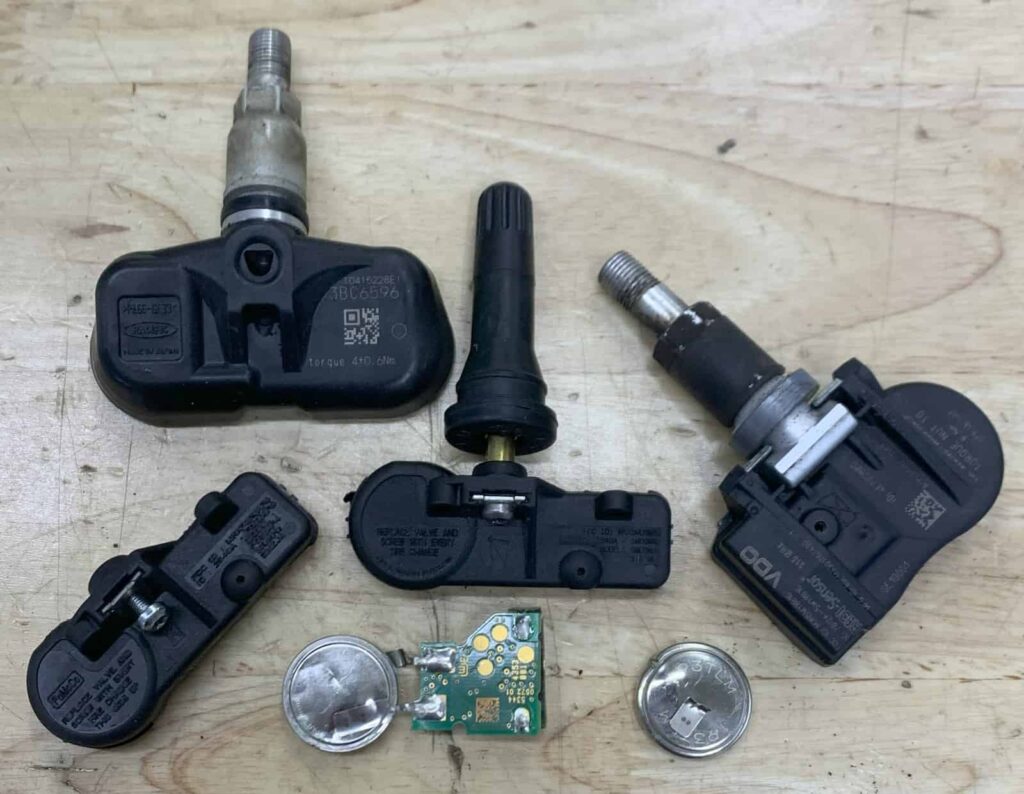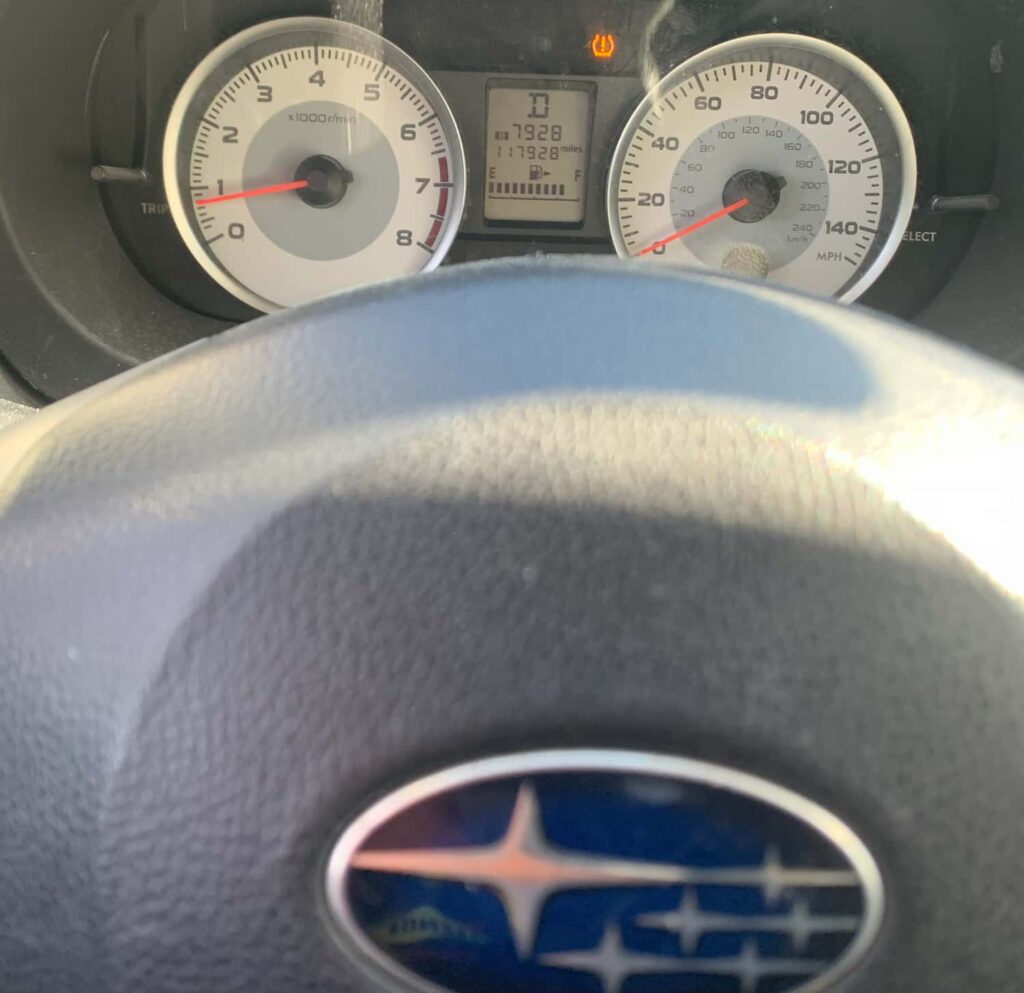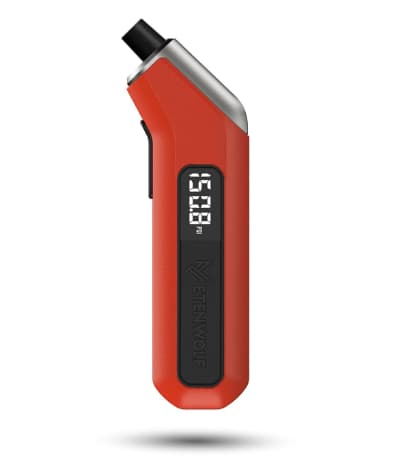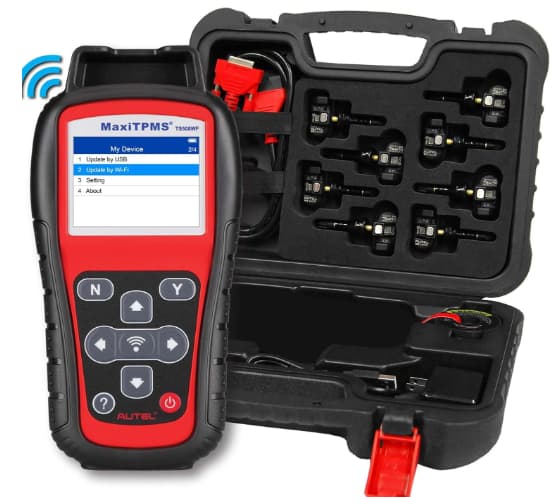If you want to learn more about your Subaru tire light and tire pressure monitoring system, keep reading.
The Subaru Tire Pressure Monitoring System (TPMS) is a direct system designed to ensure your tires are at their correct pressure levels for safety and efficiency. If your low tire light is on and you want it off, first let’s understand how it works.
Subaru Low Tire Pressure Light (TPMS) Explained
The Subaru TPMS works as follows:
Tire pressure sensors in each tire measure air pressure and wirelessly transmit data to the Subaru’s on board computer.
Low tire pressure alerts are triggered on the dashboard if tire pressure drops significantly below recommended levels (usually 25% below Subaru reference values), warning the driver.
Each tire pressure sensor is battery powered, with a lifespan of 5-10 years or 100,000 miles, requiring replacement when depleted.
TPMS recalibration is necessary after tire rotations, adjustments, or replacements to ensure accurate readings.
What Makes My Subaru Tire Pressure Light Come On?
Low Tire Pressure: The most common reason for a Subaru TPMS warning light; one or more tires are significantly underinflated.
Temperature Changes: Significant air temperature drops can decrease tire pressure, triggering the low tire pressure light.
Faulty Sensor: A malfunctioning or dead battery in a TPMS sensor will cause the tire pressure monitoring system to signal an error.
Recent Tire Service: If tires were recently replaced or rotated and the TPMS wasn’t correctly recalibrated, the TPMS light might come on.
Tire Pressure Monitoring System Error: Occasionally, the TPMS itself may have a malfunction, requiring a TPMS diagnostic tool or professional diagnostics.
How Do I Reset a Subaru Low Tire Pressure Light?
When the tire pressure light on your dashboard turns on, pull over slowly and check your tire pressure right away.
Figure out which tire is low or high on air and adjust the tire pressure accordingly. (The Subaru TPMS lets you know which tire is low on your screen by displaying the low pressure value in yellow instead of white)
Fill your tires to the exact recommended pressures. I cannot emphasize this enough, accuracy is key.
Drive your Subaru vehicle. Drive for 10 or 15 minutes at speeds over 20 Mph.
If the low tire light doesn’t go off right away, re-check your tire pressure to make sure they are all at the exact pressure you set them to. If any tire has lost any amount of air pressure, you have some sort of tire leak.
If the pressures are at the exact pressure you set them to and the tire light still won’t go off, over fill your tires.
We recommend filling your problem tire with 45 Psi or about 10 Psi over the recommended pressure. With the tire overinflated, drive the car again for another 10 or 15 minutes. This will turn off the tire light.
Now that the tire light is off, readjust the pressure back to the recommended 35 Psi.
One more option, if you followed all these steps and the light is still on (and you don’t have a leak), check your spare tire. Some Subaru’s (depending on the package you have) do have a full size spare with a tire pressure sensor in them. Check the pressure and drive the car again.
TPMS Sensor Relearn
Subaru vehicles do not include a low tire pressure or TPMS reset button. Technically a tire pressure sensor relearn is done using a TPMS programming or diagnostic tool when a new sensor is installed.
TPMS Diagnostic Tools
If your Subaru low tire pressure light does not turn off despite following the TPMS reset procedure and having the correct air pressures, you will need a TPMS diagnostic tool to properly troubleshoot and determine which tire pressure sensor is causing the problem. I personally use Autel TPMS tools and they work great.
FAQ
How Far Can I Drive With the Low Tire Light On?
If your low tire pressure light is on, check your tire pressure as soon as possible. The only reasonable way to know how far you can drive with the low tire light on is to troubleshoot and determine why it is on.
What Should I Do if the Tire Pressures are correct but the TPMS Light is On?
If all the tire pressures are correct and have not lost any air, attempt the Subaru TPMS reset procedure outlined above. If that does not work it means you likely have a TPMS malfunction and you will need a TPMS diagnostic tool to determine which tire pressure sensor is causing the problem.
Why is the Low Tire Light Blinking?
A blinking low tire pressure light means your Subaru has a TPMS malfunction. This occurs when one or more tire sensors stop communicating with the vehicle’s onboard computer. Usually due to a sensor battery dying.
Can I Disable Subaru Vehicles Tire Pressure Monitoring System?
No you cannot disable a Subaru TPMS. If you remove each tire pressure sensor from the wheels, the tire pressure light will blink on the dash and then stay on permanently.
When Should You Adjust Your Tire Pressure?
The best time to adjust your tire pressure is when your tires are cold. This is for accuracy reasons and can prevent the low tire pressure light from turning on. Your tires are cold either before driving or after the car has been parked for 3 or more hours.
Do I Need to Check the Tire Pressure If I Change My Wheels and Tires?
Yes. Follow the Subaru TPMS reset procedure after any tire or wheel has been replaced or serviced.
About the Author
STEFAN A.
Professional Automotive Technician – I am currently an automotive technician in New Jersey and have worked in private shops as well as dealerships. When I am not writing articles I am wrenching on race cars and driving radio controlled cars at the track!
Please note that this blog post contains Amazon affiliate links. This means that if you make a purchase through one of these links, we at TPMSRESET.COM may earn a small commission at no extra cost to you. We only recommend products that we personally use and believe in. Thank you for supporting us.






